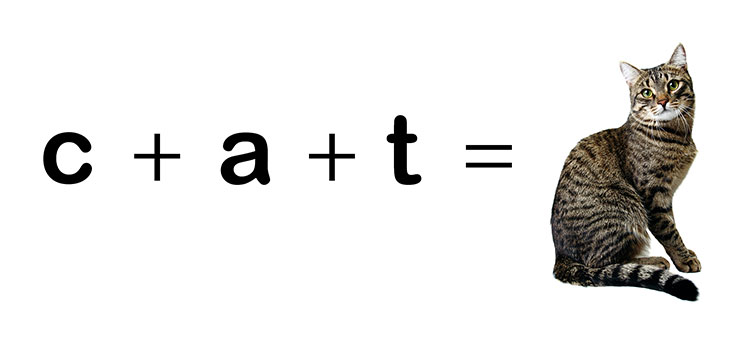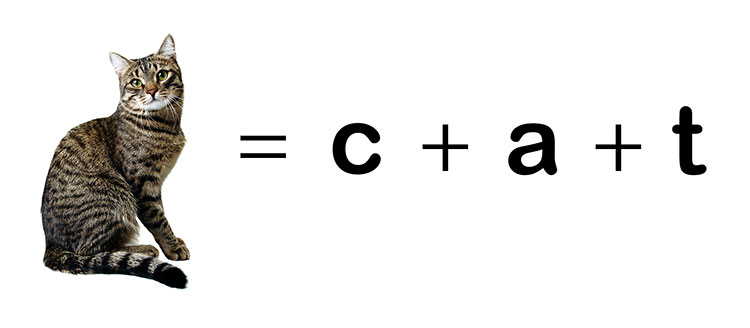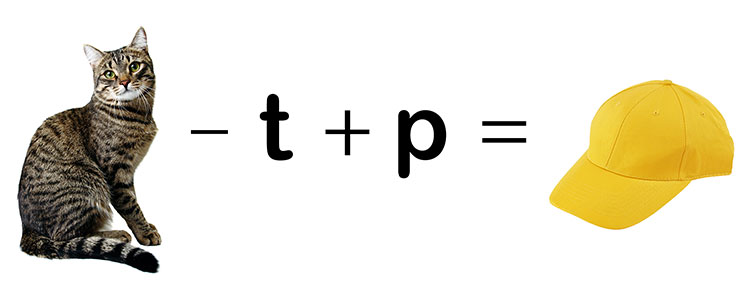Basics of Phonological/Phonemic Awareness
Educators, clinicians, et. al.: For an in-depth analysis of our curriculum and its supporting research, click here.
1. What Is Phonological/Phonemic Awareness?
This ability to work with sounds in language — sometimes called pre-phonics, pre-reading, or early reading — is a foundational skill that makes learning to read easier.Phonemic awareness is the ability to split up and rearrange individual sounds within words.Phonemic awareness is the ability to split up and rearrange the individual sounds in words. Before diving into individual sounds within words (phonemic awareness), we teach children to pay attention to more obvious sounds. We start with environmental noises, then move into sentences, whole words, and then syllables. Only after a child can divide words into syllables do we start teaching the phonemic awareness part of our curriculum. A child with good phonemic awareness, who is ready to start learning phonics, will have mastered the skills of blending, splitting, and substituting the sounds in words — phonemes.
1.1 Blending

Blending: taking a sequence of phonemes and blending the sounds together into a word
1.2 Splitting

Splitting: breaking a word down into its individual phonemes
1.3 Substituting

Substituting: changing one phoneme within a word to make a different word
2. What Are Phonemes?
Phonemes are the individual sounds that make up words. Some letters have more than one phoneme (e.g., long and short vowel sounds). Some phonemes can be represented by more than one letter (for example, a /k/ sound can be written with the letter C or the letter K, or even CK). Sometimes a single phoneme is written with multiple letters (such as the /sh/ in ship). Here are some more examples of words divided into their phonemes:- pig has three phonemes: /p/, /iii/, and /g/
- chop has three phonemes: /ch/, /ooo/, and /p/
- frog has four phonemes: /f/, /rrr/, /ooo/, and /g/
- kitten has five phonemes: /k/, /iii/, /t/, /eee/, and /nnn/
- shopping has five phonemes: /sh/, /ooo/, /p/, /iii/, and /ng/
The English language has 44 phonemes but only 26 letters in its alphabet. This is what makes reading English hard, because there isn’t a simple relationship between letters and sounds.↑ Top
3. How to Get Started
Go to our Phonological/Phonemic Awareness Curriculum page for an outline of all our games and activities and the order in which you should do them. Be sure to access the Pacing, Assessment, and Fast Track page to help you decide where to focus and direct your teaching time. Our Teaching Tips page includes guidelines for lesson planning and advice for tailoring the curriculum to the needs of your child. ↑ Top4. How Long Does It Take?
With just a few minutes of instruction a day, a typical four- or five-year-old will complete our entire curriculum in about one school year, or ten months. This time will vary with the age and maturity of the children as well as the class size. ↑ Top5. Research & Benefits
Phonemic awareness makes learning to read easier. Children with high phonemic awareness can already blend sounds into words, so phonics comes more naturally to them. When a child can divide words into sounds, spelling (breaking words into letters) is easy.“Teach[ing] phonemic awareness…accelerates reading and writing growth of the entire classroom…” Ingvar Lundberg, “Phonemic Awareness in Young Children”A typical child starting elementary school with high phonemic awareness is almost certain to become a confident reader. A child with low phonemic awareness will almost definitely struggle with reading. Other Phonological/Phonemic Awareness Resources:
- Ellis, Edwin S. “How Now Brown Cow: Phoneme Awareness Activities.” Reading Rockets. https://www.readingrockets.org/article/how-now-brown-cow-phoneme-awareness-activities
- The Florida Center for Reading Research. VPK (Voluntary Pre-Kindergarten) Learning Center Activities. https://www.fcrr.org/for-educators/prek_cca.asp
Leave a Reply

7 Responses to “Basics of Phonological/Phonemic Awareness”
betsy terne
thanks so much for the info, i am a mother of four and my youngest son is 5 yrs old who is starting to read now and so glad to read about your phonemes. thanks much
javion
i love this game it is great
Desiree fortich
A retired teacher. Now I’m a homecarer for a 4 year-old son and after-school for a 5 year- old. Today I am in need of resources for my children. As I am reading your website, I can use your materials to better equip my children. Thank you.
brenda sebastian
The dictionary divides the word /happy/ as hap/py, and when I am teaching syllables our class divides this word as the dictionary pronounces it as two consonants that make the vowel short. I attended a recent workshop that said I was wrong and they said that it should be divided when speaking it as /happ/y/ That doesn’t make sense… What is your opinion? Thank you.
Kebel
You have shared a good post regarding phonics awareness with good graphics. I think there are also reading programs based on phonics awareness that could help parents in teaching their children reading, like https://readwk.com/children-learning-reading-program/. I think it is also important that parents provide the right support and help to children with regards to teaching.
Milton
This is good to know. Thanks.
V
Thank you for sharing your curriculum. It’s a great source of information for teaching children how to read. 🙂